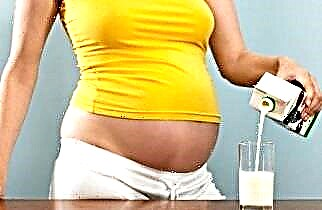Classification and names of drugs
 Cardiac glycosides (CG) belong to the group of cardiotonic (enhancing contractile activity and increasing the efficiency of the heart) drugs.
Cardiac glycosides (CG) belong to the group of cardiotonic (enhancing contractile activity and increasing the efficiency of the heart) drugs.
All SGs are substances of plant origin. Now about 350 items of drugs with cardiotonic activity have been allocated, but only a few dozen are used in medicine. Synthetic glycosides are used only to a limited extent in some countries.
SG classification by origin:
- Drugs of the foxglove group (Digitalis):
- Purple - Digitoxin (not used in recent years);
- Woolly - Digoxin, Celanide;
- Strophanthus group:
- Strofantin K;
- Etrophantin G;
- Lily of the valley (Convallaria majalis) preparations:
- Korglikon;
- Lily of the valley tincture;
- Spring adonis group (Adonis vernalis):
- Infusion of adonis herb.
Characteristics of SGs by their pharmacokinetic qualities:
- Non-polar - lipophilic (Digitoxin). They are almost completely adsorbed in the gastrointestinal tract, firmly bind to blood plasma albumin, and are subject to enterohepatic circulation. They have a very pronounced cumulative effect. They begin to act in 1.5-2 hours, are eliminated from the body in 14-21 days
- Moderately polar (Digoxin, Celanide). They have good absorption, bind to proteins by 20-30%, partially biotransformed by the liver, excreted in feces and urine. They can accumulate in the body. The onset of action is after 30-120 minutes (with parenteral administration - 5-30 minutes), complete elimination is observed after 5-7 days.
- Polar (Strofantin, Korglikon). They are poorly adsorbed in the gastrointestinal tract (intended mainly for intravenous administration), are not metabolized and are excreted unchanged by the kidneys. They have cumulative (accumulative) abilities. The onset of action occurs in 5-10 minutes, elimination in 1-3 days.
Modern research in pharmacognosy is aimed at the development of chemical methods for the transformation of natural glycosides into drugs with improved pharmacotherapeutic properties, the cultivation of plants with an increased content of SG by agrotechnical methods and the search for new methods of obtaining raw materials for drugs.
List of drugs from cardiac glycosides of plant origin:
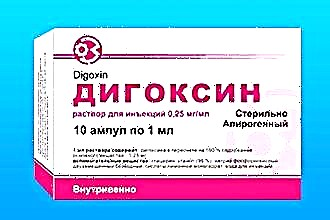 Strofantin;
Strofantin;- Digoxin;
- Digitoxin;
- Korglikon;
- Celanide;
- Adonisides.
Also in clinical practice, semisynthetic SGs are used - Methylazide, Acetyldigoxin.
The drugs are available in the form of tablets or ampoules for intravenous administration.
Mechanism of action
Cardiac glycosides are complex nitrogen-free compounds of plant origin with a selective cardiotonic effect (they can increase myocardial contractility, stroke and minute blood volume without increasing oxygen consumption).
A glycoside molecule consists of two parts:
- Glycone is a sugar that determines the pharmacokinetics of the drug (ability to dissolve in water, fats, acids, passage through the cell membrane, absorption rate in the digestive tract, bond strength with plasma proteins, affinity with receptors).
- Aglycone is a structure that is responsible for the mechanism of action and pharmacodynamics (directly the clinical effects of taking a substance).
Entering the body, SGs interact with receptors called endodigins, which are located in the myocardium, skeletal muscles, smooth muscle fibers, liver, kidneys, and blood cells.
The cardiotonic mechanism of action of cardiac glycosides is associated with the ability to:
- inhibit the activity of Na-K-ATP-ase (an enzyme responsible for the sodium-potassium pump), reducing cell repolarization;
- forming complexes with Ca ions2+ transport them inside the cardiomyocyte;
- stimulate the release of ions from the sarcoplasmic reticulum into the free cytoplasm.
 As a result of these processes, the concentration of functionally active Ca increases2+ inside the cardiomyocyte. This ion neutralizes the troponin-tropomyosin complex and releases the actin protein, which interacts with myosin to form the basis of cardiac contraction. In addition, Ca ions2+ activate myosin ATP-ase, which supplies the contractile process with the necessary energy.
As a result of these processes, the concentration of functionally active Ca increases2+ inside the cardiomyocyte. This ion neutralizes the troponin-tropomyosin complex and releases the actin protein, which interacts with myosin to form the basis of cardiac contraction. In addition, Ca ions2+ activate myosin ATP-ase, which supplies the contractile process with the necessary energy.
Influence of Ca ions2+ on cardiac activity:
- Increased heart rate;
- Heart rate acceleration;
- Increased myocardial excitability and pacemaker automatism.
Consequently, under the influence of cardiac glycosides, the work of the heart becomes more economical, since they optimize the use of ATP and the need for oxygen.
Pharmacological effects from taking glycosides:
- Positive inotropic effect. The strength of myocardial contractions increases, the systole is shortened, as a result of which the stroke volume of blood and cardiac output return to normal. Partly due to the release of catecholamines and an increase in the tone of the sympathetic nervous system.
- Negative chronotropic action. Prolongation of diastole (the time of rest of the myocardium and filling of the coronary vessels with blood) and a decrease in the heart rate.
- Negative dromotropic effect. Slowing down the passage of the impulse through the conducting system of the heart (from the sinus to the atrioventricular node).
- Diuretic action. In patients with decompensated heart failure and fluid retention in the body due to improved renal circulation and inhibition of Na ion reabsorption+ in the distal tubules, daily diuresis increases.
- Sedation.
- Strengthening intestinal motility, gallbladder tone.
Hemodynamic effects from taking cardiac glycosides:
- Strengthening and shortening the duration of systole;
- Increase in minute blood volume, left ventricular ejection fraction;
- Diastole lengthening;
- Decrease in heart rate (effect on the vagus nerve);
- Approaching the normal size of the heart;
- Decrease in venous pressure;
- Optimization of the blood supply to the heart muscle (improvement of subendocardial blood flow, rheological properties of blood);
- Decrease in the volume of circulating blood, myocardial oxygen consumption;
- Normalization of pressure in the vessels of the small circle, reducing the risk of pulmonary edema, improving gas exchange, blood oxygen saturation;
- Elimination of edema.
Indications and contraindications
Indications for the use of SG:
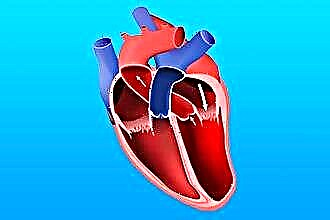 Acute and chronic heart failure due to impaired contractile activity. (Most often, glycosides are prescribed to patients with congestive CHF II, III, or IV functional class).
Acute and chronic heart failure due to impaired contractile activity. (Most often, glycosides are prescribed to patients with congestive CHF II, III, or IV functional class).- Atrial fibrillation (tachysystolic form);
- Paroxysmal, supraventricular, atrial tachycardia;
- Vegeto-vascular cardioneurosis.
The list of contraindications to the use of cardiac glycosides:
- Severe bradycardia;
- Atrioventricular block II-III degree;
- Morgagni-Adams-Stokes Syndrome, WPW;
- Polytopic extrasystole;
- Heart failure with diastolic dysfunction;
- Acute coronary syndrome;
- Sick sinus syndrome (without an installed pacemaker);
- Infectious myocarditis;
- Constrictive pericarditis;
- Ventricular tachycardia;
- Electrolyte imbalance: hypokalemia, hypercalcemia;
- Mitral valve stenosis;
- Hypertrophic cardiomyopathy (obstructive form);
- Aneurysm of the thoracic aorta;
- Hypertrophic subaortic stenosis;
- Cardiac tamponade;
- Carotid sinus syndrome;
- Restrictive cardiomyopathy;
- Arrhythmias caused by glycoside intoxication in history;
- Chronic renal failure with programmed hemodialysis;
- Hypersensitivity to any cardiac glycosides.
These drugs require individual dose selection (for long-term therapy, it is titrated for 7-10 days) and regular monitoring of the patient's clinical condition (ECG, blood electrolytes - K, Ca, Mg).
If intravenous administration is necessary, the dose of the drug is divided into 2-3 doses.
Dose adjustment is required in patients with:
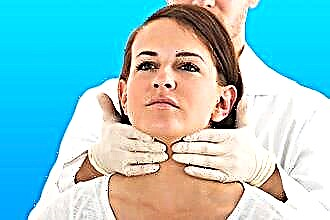 Diseases of the thyroid gland. In hypothyroidism, the dose of cardiac glycosides should be reduced. In the case of thyrotoxicosis, there is a relative resistance to SG.
Diseases of the thyroid gland. In hypothyroidism, the dose of cardiac glycosides should be reduced. In the case of thyrotoxicosis, there is a relative resistance to SG.- Malabsorption syndrome, short bowel. Due to impaired absorption of the drug, an increase in the dose is required.
- Severe respiratory pathology (increased sensitivity to glycosides).
- Electrolyte imbalance. High risk of developing digitalis intoxication and arrhythmias.
In elderly patients and debilitated patients, the elimination period of the drug is lengthened, which increases the risk of side effects and overdose.
Interaction of glycosides with other medicinal substances, requiring dose adjustment:
- Adrenomimetics - Epinephrine, selective β-agonists (incompatible, risk of arrhythmias);
- Aminazine reduces the effectiveness of SG;
- Anticholinesterase drugs - Proserin, Physiostigmine (increase bradycardia);
- Glucocorticosteroids - Hydrocortisone, Prednisolone (increase the frequency of side effects);
- Diuretics - Furosemide, Trifas (enhance the effect of SG);
- Paracetamol (reducing the excretion of glycosides by the kidneys);
- β-blockers and antagonists of Ca2+-channels (the occurrence of bradycardia and complete heart block).
Side effects and symptoms of overdose
During treatment with cardiac glycosides, like any other medications, there is a risk of side reactions:
- Rhythm and conduction disturbances (sinus bradycardia, blockade, ventricular fibrillation);
 Disorders of the blood system - eosinophilia, thrombocytopenia, agranulocytosis;
Disorders of the blood system - eosinophilia, thrombocytopenia, agranulocytosis;- Allergic manifestations - itching, hyperemia, rashes (erythematous, papular), urticaria, Quincke's edema.
- Gynecomastia (enlargement of the mammary glands) in men due to the estrogenic activity of SG;
- Mental disorders - depression, auditory and visual hallucinations, memory disorders, confusion;
- Neurological symptoms - migraines, asthenia, vertigo, sleep disturbances, nightmares, apathy or nervous agitation, myalgia;
- Blurred vision (the result of retrobulbar neuritis), photophobia, the effect of glow around objects, impaired color perception (seeing everything in the yellow-green or gray-blue range);
- Lack of appetite, abdominal pain, nausea, insufficiency of visceral blood flow, intestinal ischemia.
If the recommended doses are exceeded, SGs show their toxicity and are capable of disrupting metabolic processes, causing Ca retention2+ in the cytoplasm due to problems with its removal from the cell. At the same time, the amount of ATP, glycogen, proteins, potassium, magnesium decreases and the metabolism shifts to the anaerobic side. The relaxation of the myocardium in diastole is impaired, the stroke volume of blood falls, the pre- and afterload increases.
Failure to comply with the rules of glycoside treatment (self-increasing the dose or shortening the intervals between doses) is fraught with the development of overdose symptoms:
- Arrhythmias, bradycardia, AV blockade, extrasystoles, ventricular fibrillation;
- Nausea, diarrhea, lack of appetite, feeling of a full stomach;
- Headaches, vertigo, psychomotor agitation;
- Decreased visual acuity, impaired color perception, scotomas (blind spots), distortion of the size of the object;
- Impaired consciousness, syncope.
Treating signs of glycoside poisoning
If symptoms of an overdose develop, the following measures should be taken:
- stop taking glycosides immediately;
- Induce vomiting, rinse the stomach;
- Take activated carbon (at the rate of 1 tablet per 10 kg of weight) or another sorbent;
- Seek medical attention immediately.
In a hospital, a patient with an overdose of cardiac glycosides is administered:
- Subcutaneous administration of Unitiol (antidote) at 0.05 g per 10 kg of body weight 4 times a day, cholestyramine;
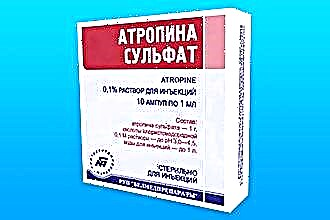 Potassium solution infusion (without insulin) or combined drugs - Asparkam, Panangin;
Potassium solution infusion (without insulin) or combined drugs - Asparkam, Panangin;- The use of saline preparations;
- With bradycardia - the introduction of Atropine;
- In case of arrhythmia - intravenous Lidocaine, Difenin, Fentoin, Amiodarone;
- With a pronounced blockade - setting an artificial pacemaker;
- Vitamins - Nicotinamide, Thiamin, Tocopherol, Pyridoxine;
- Means that increase metabolism - Riboxin, Cytochrome C, methyluracil;
- Oxygen therapy.
The mechanism of action of Unithiol (a universal antidote) is associated with the property of reducing the toxic effect of glycosides on the functional activity of ATP-ase and normalizing energy metabolism in the myocardium.
With a life-threatening overdose of glycosides (mortality during intoxication reaches 40%), the administration of anti-digoxin serum, Digibind, immunoglobulins that bind SG is indicated. Dialysis and exchange transfusion are ineffective.
Considering the frequency of side effects, overdose and their connection with a violation of the scheme for the use of cardiac glycosides, the doctor should focus the patient's attention on strict adherence to prescriptions, and the patient should definitely study the instructions for the drug before using it. It is strictly forbidden to independently replace the glycoside with an analogue without prior agreement with the attending physician.
Conclusions
Glycosides are drugs for the treatment of chronic heart failure with impaired contractile function. A particularly good effect is observed in patients with a combination of CHF and atrial fibrillation. In this case, a slow digitalization scheme is shown.
Appointment of patients with cardiac glycosides (most often Digoxin) improves the course of the disease, quality of life, increases resistance to physical activity, without changing the myocardial oxygen demand. Against the background of the intake of SG in patients, weakness, shortness of breath decrease, sleep improves, edema, cyanosis disappear, tachycardia goes into a normal rhythm, urine output increases, ECG indicators stabilize.

 Strofantin;
Strofantin; Acute and chronic heart failure due to impaired contractile activity. (Most often, glycosides are prescribed to patients with congestive CHF II, III, or IV functional class).
Acute and chronic heart failure due to impaired contractile activity. (Most often, glycosides are prescribed to patients with congestive CHF II, III, or IV functional class). Diseases of the thyroid gland. In hypothyroidism, the dose of cardiac glycosides should be reduced. In the case of thyrotoxicosis, there is a relative resistance to SG.
Diseases of the thyroid gland. In hypothyroidism, the dose of cardiac glycosides should be reduced. In the case of thyrotoxicosis, there is a relative resistance to SG. Disorders of the blood system - eosinophilia, thrombocytopenia, agranulocytosis;
Disorders of the blood system - eosinophilia, thrombocytopenia, agranulocytosis; Potassium solution infusion (without insulin) or combined drugs - Asparkam, Panangin;
Potassium solution infusion (without insulin) or combined drugs - Asparkam, Panangin;
